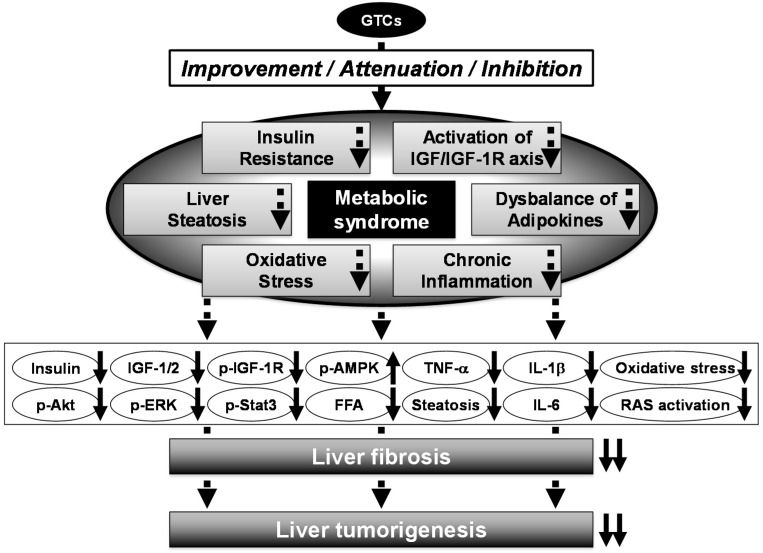Figure 2.
Mechanisms of action of GTCs in the inhibition of metabolic syndrome-related liver carcinogenesis. Metabolic syndrome significantly increases the risk of HCC development. Several pathophysiological mechanisms link metabolic syndrome and liver carcinogenesis, such as insulin resistance, activation of the IGF/IGF-1R axis, chronic inflammation, oxidative stress, and adipokine dysbalance. They appear to be followed by molecular abnormality, including activation of PI3K/Akt and MAPK/ERK signaling, down-regulated phosphorylated-AMPK, and increased pro-inflammatory cytokines. Administration of GTCs significantly reduces the risk of HCC development in obese patients, and this might be associated with decreased insulin resistance and hepatic steatosis, inhibition of the activation of the IGF/IGF-1R axis, and attenuation of oxidative stress and chronic inflammation. Up- and down-pointing solid arrows mean items are up- and down-regulated, respectively.

